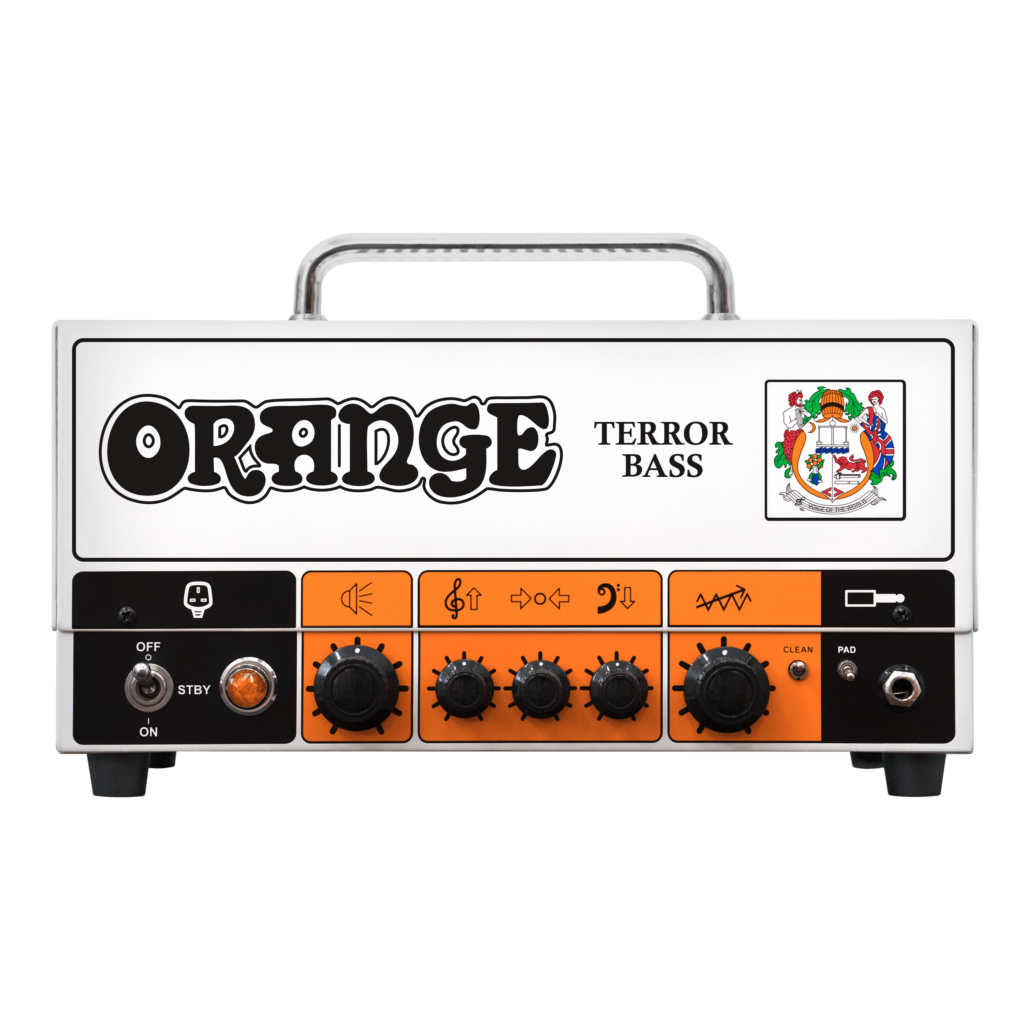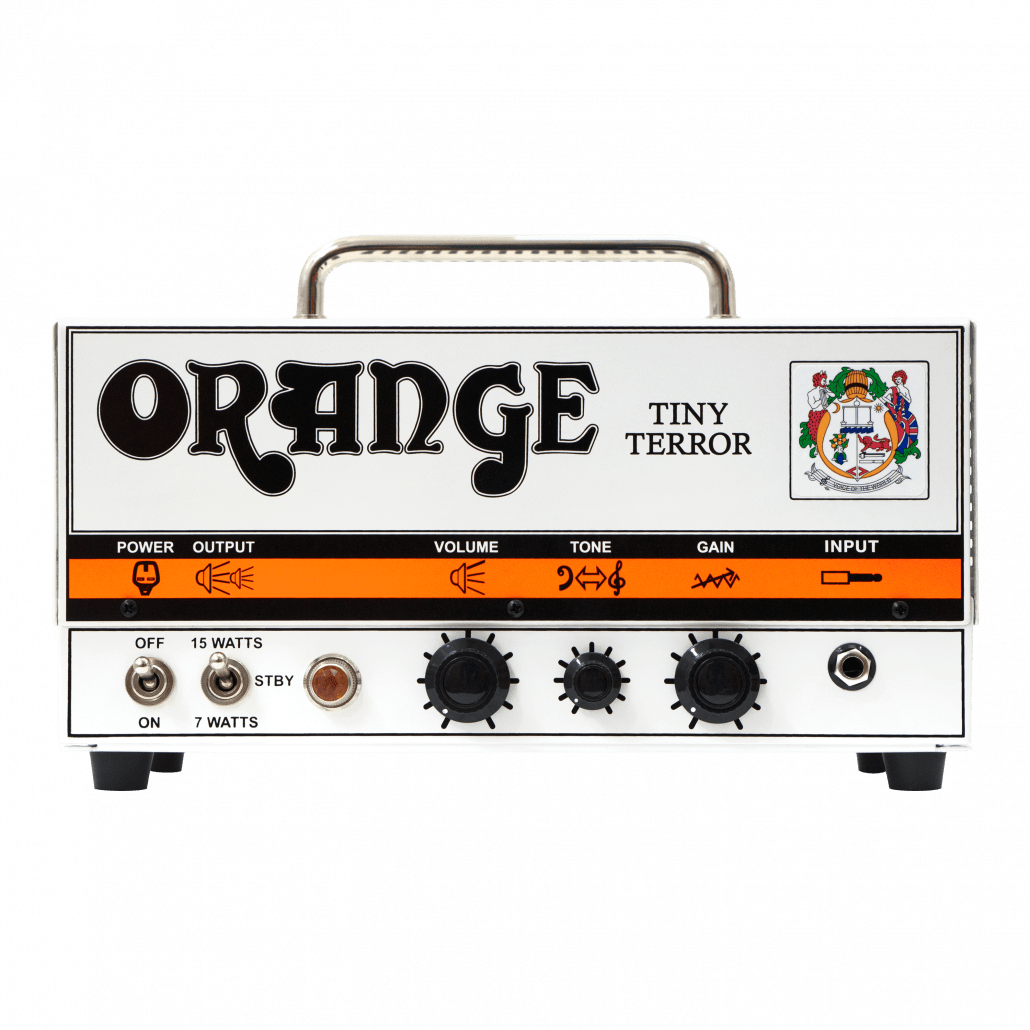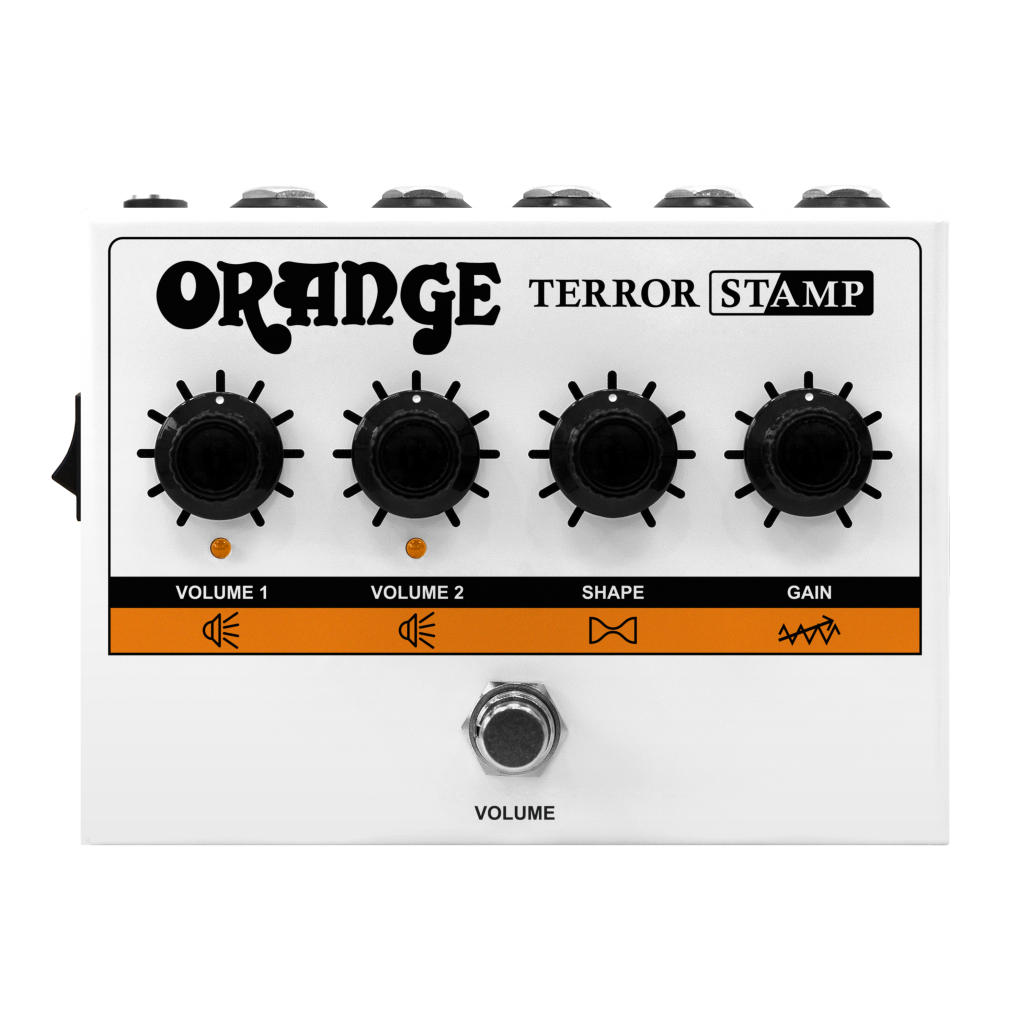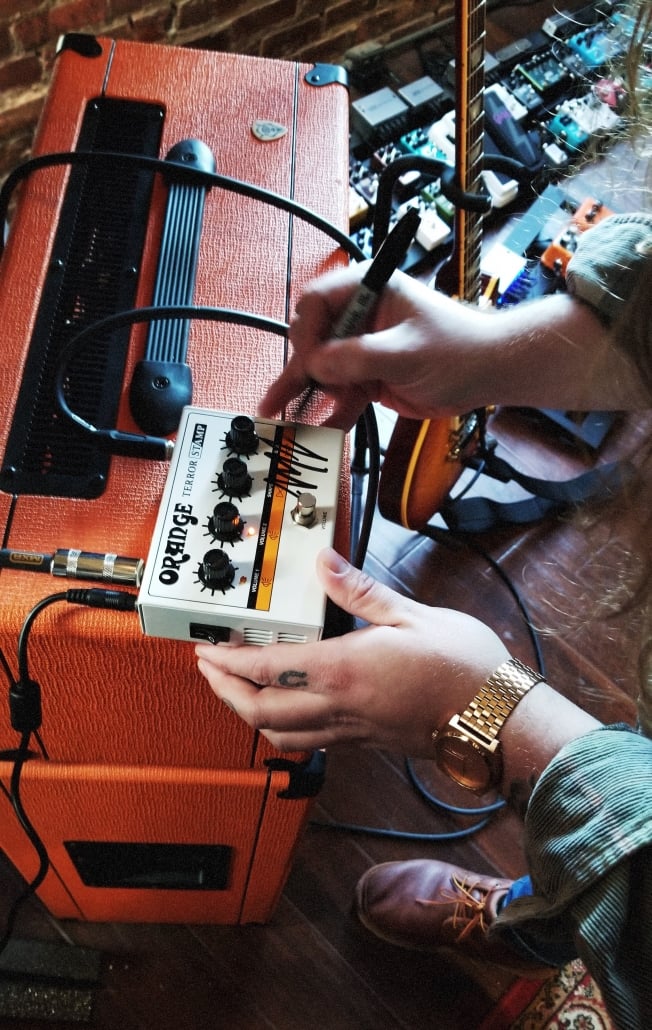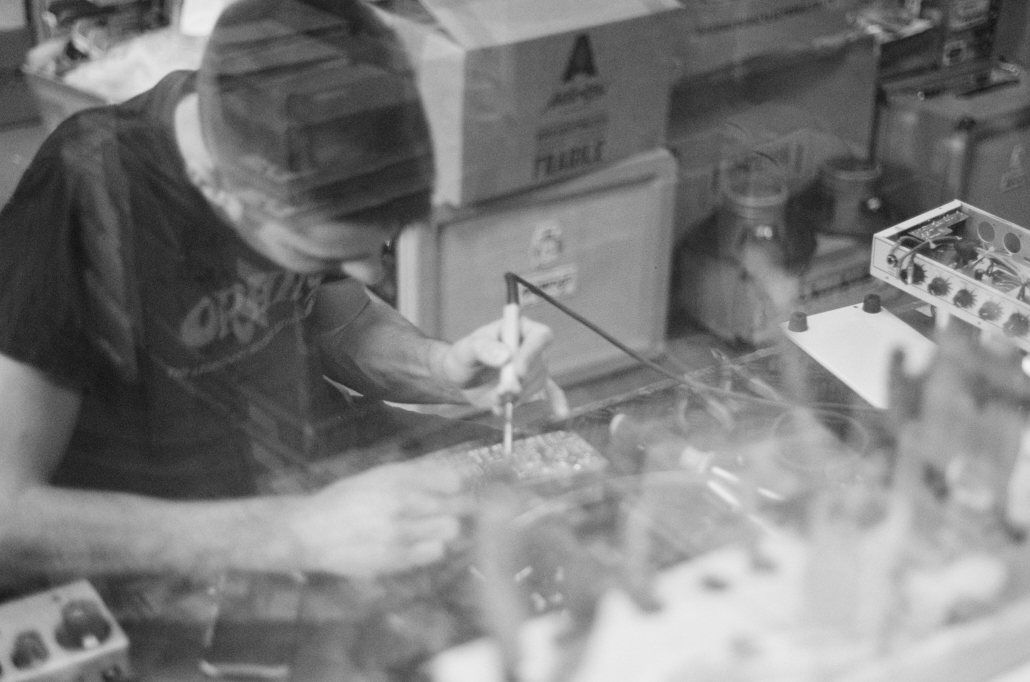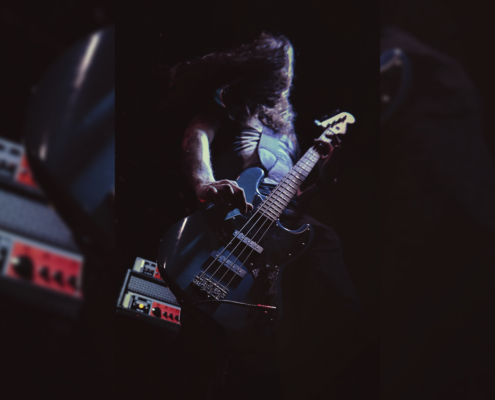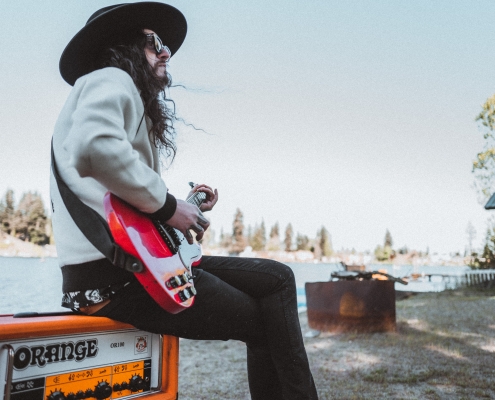Orange Spotlight: Troy The Band
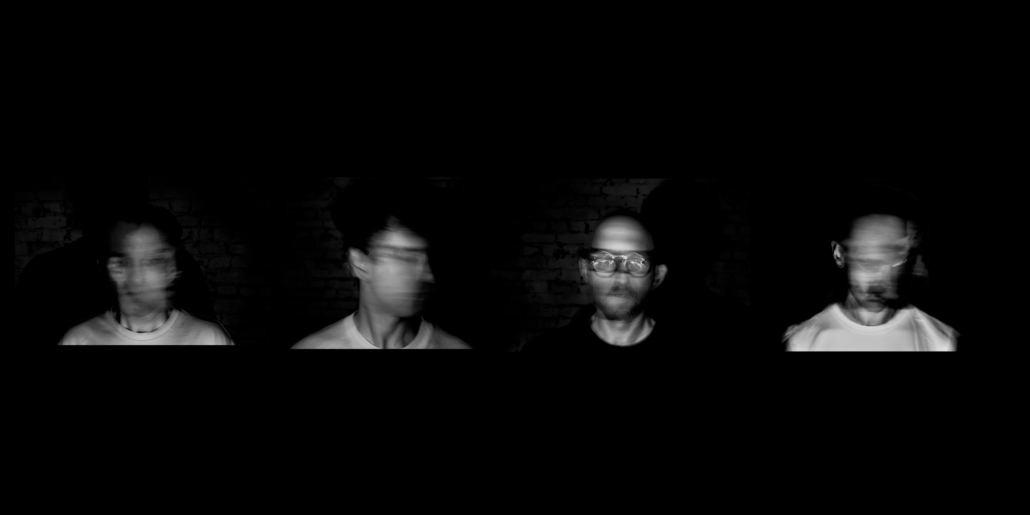
Who are Troy The Band?
We are a London-based four-piece, composed of Sean Durbin on bass, Sean Burn on guitar, Craig Newman on vocals, and Jack Revans on drums. We are best described as a mix between stoner-doom, shoegaze and post rock.
We formed in 2021, after Sean Durbin put an ad out seeking members to form the band. Our original drummer, Dan England, who recorded drums on the EP and our album, stepped down after recording the album. After that we were lucky enough to have our friend Jack, who had already been sitting in on our live shows quite a lot, join on a permanent basis.
We also had a few other guitarists that we jammed with before Sean Burn joined. Sean and Sean actually knew one another from New Zealand, and it was a chance meeting on the street in London at a time when the band was in need of a new guitarist that led to them joining. When you think about it, it was a pretty serendipitous set of circumstances that led to them joining, which in turn had a vital impact on the trajectory of our sound that just wouldn’t have happened with the other guitarists we had initially been playing with.
What inspires Troy The Band?
We’re inspired by a lot of different genres and bands; both consciously and unconsciously. Obviously we fit broadly within the stoner-doom genre so there are bands that will influence us from that end of the spectrum, but all of us tend to enjoy a broad array of musical styles which will inevitably make an impact on the way we approach a specific piece of music. To name a few bands whose names often come up for us: High on Fire, Khruangbin, Operator Generator, Acid King, All Them Witches, Pigs Pigs Pigs Pigs Pigs Pigs Pigs, Rush, Melvins, Big Business, Jesus and the Mary Chain, Joy Division, Black Midi, Smashing Pumpkins, Bossk, Godspeed You! Black Emperor, The Horrors, Deerhunter, Women, My Bloody Valentine, and Unknown Mortal Orchestra among others.
We aim to make music that first and foremost we enjoy and find interesting, and then try and bring others along for the ride.
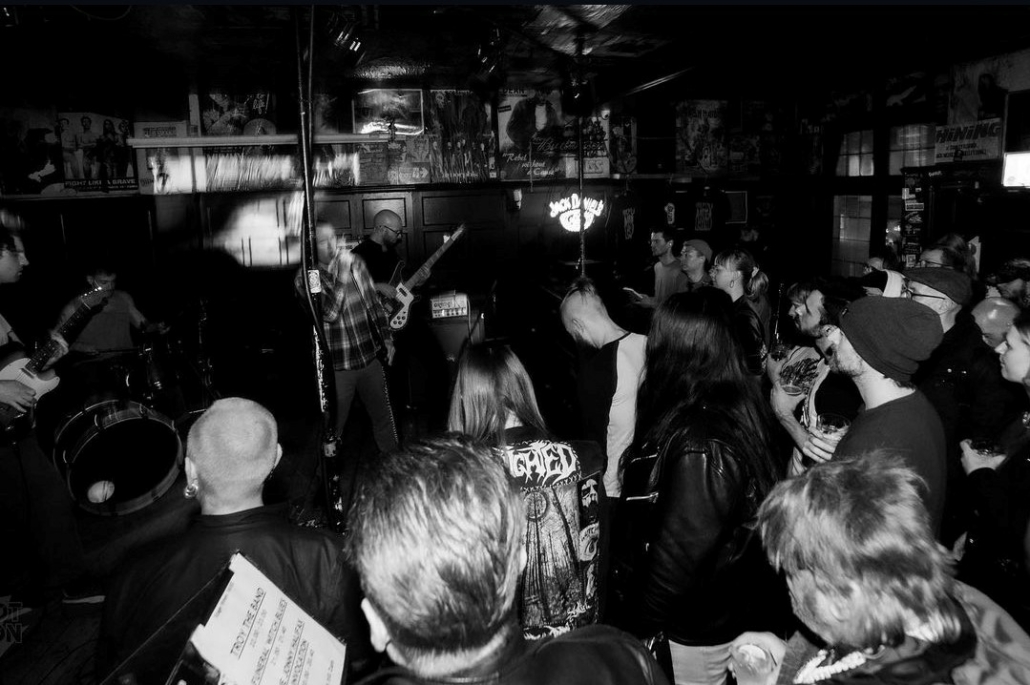
What Orange gear is important to Troy The Band?
Sean Durbin uses an Orange Terror Bass and also splits his signal into a guitar amp, which is currently an Orange Tiny Terror valve amp. Both work well for our sound, and they are also pretty portable and indestructible. Plus they look cool sitting on top of the stacks next to each other.
This dual setup has evolved over time. Initially, Sean started splitting the signal through a bass and guitar amp because when the band first started we didn’t have a regular guitar player and splitting the signal helped fill out the sound in the rehearsal room more.
When Sean Burn joined, rather than just mirroring the bass, they brought more atmospheric and complementary style of playing to the existing riffs, so we made a conscious choice to keep the bi-amped bass setup, where the bass is doing the work of a bassist and rhythm guitarist that holds down the main riffs of the songs, while Sean B adds harmonic layering over the the top of those riffs.
This might be somewhat surprising, especially within a genre that extols the virtue of monstrous amps, but Sean Burn uses an Orange Terror Stamp which is mounted at the end of the signal chain on a very elaborate pedalboard setup.
They purchased Terror Stamp initially due its affordability, but it has been an incredibly reliable and great sounding piece of equipment. When we went to record our album, even with a wall of mega-powerful tube amps at our disposal, Sean opted to record with the Terror Stamp since it sounded great and all their pedals were already calibrated to it.
It does have its limitations in some live situations, trying to compete with the other Sean’s Terror Bass and Tiny Terror, but these are easily overcome. We either just mic it up, or use it like a preamp and slave the power section of whatever house backline head is available to achieve the necessary volume. But the tone all comes from the terror stamp and accompanying pedals.
Future Orange amps?
One of the problems with Orange Amps is that they are so bombproof and consistent that there isn’t much need for constant GASing. However, the Orange fur coat fuzz with octave up is likely to replace the current octave-up/distortion configuration on the guitar side of Sean Durbin’s bass signal, and replacing the Tiny Terror with a Pedal Baby might be on the horizon too.
For Sean Burn, The Orange Pedal Baby or something similar will also likely make its way into their set up to provide the volume we need for our shows.
As much as we’d love to have a wall of big beautiful all-tube heads behind us, it is not always practical for a band that often travels via public transport, so it’s nice to be able to capture the Orange tone that we love in more accommodating packages.
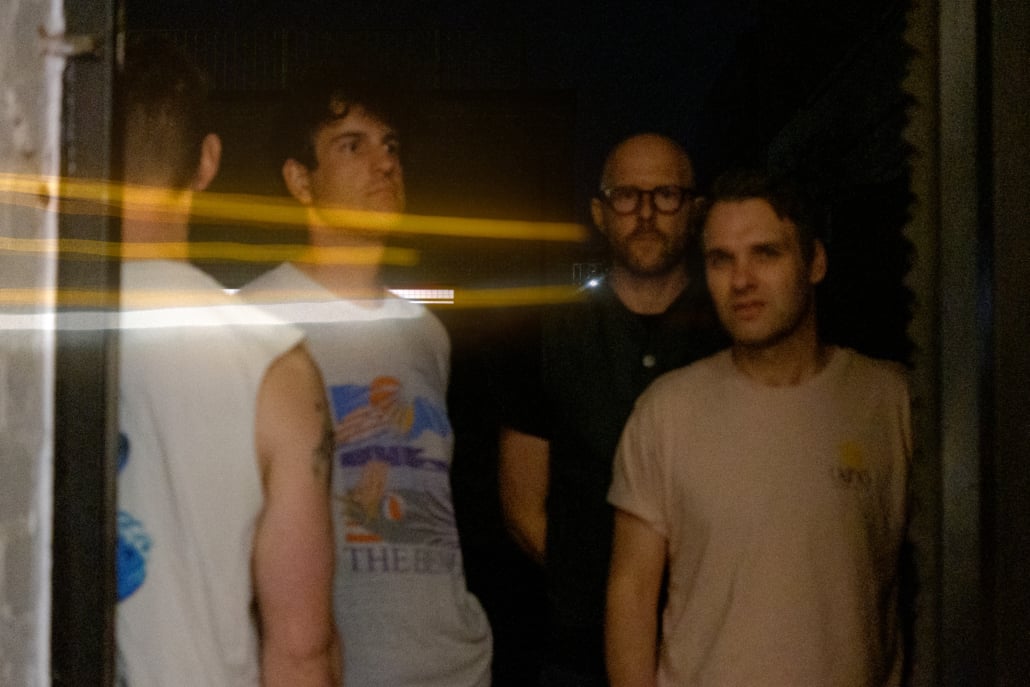
What does Orange mean to you?
For us, Orange Amps are kind of synonymous with the heavy music we play. They mean great tone and reliability.
Orange is also a big supporter of the underground music scene in London, providing the backline for a lot of venues and festivals that we’ve been a part of which is great. And we always see Ade and Joe at shows, not as representatives of Orange per se but as fans of the music, which is always nice to see.
What’s the most memorable Troy The Band moment?
We’ve had a few memorable moments, but perhaps the most memorable was an all-day show we put on to launch a beer we brewed with Old Street Brewery in East London called Troy The Beer. It was an outdoor mini-festival with six bands playing throughout the day, that we held in August. The weather had been great leading up to it, but it’s London so you never really know.
The morning of the event, the sky was blue and the weather report looked good. There was meant to be some light drizzle in the afternoon, but nothing major so we made the call to keep the event outside and set up some tents for the bands to play under just in case there was a bit of rain.
It turned out the weather report wasn’t entirely accurate and we were hit with one of the most intense thunderstorms we had ever experienced. What was particularly surreal was that the thunder storm arrived while one of the bands, Purple Kong, were playing their song “Blood Lightning” which has the repeated refrain “Blood, Lighting, Earthquake and Thunder….” So it was pretty fitting. All that was really missing in that moment were earthquakes and blood, and thankfully it stayed that way. Fortunately the rain ended up dissipating completely for the rest of the bands but for a minute there we were worried we were about to be responsible for organising Fyre Fest Part 2.
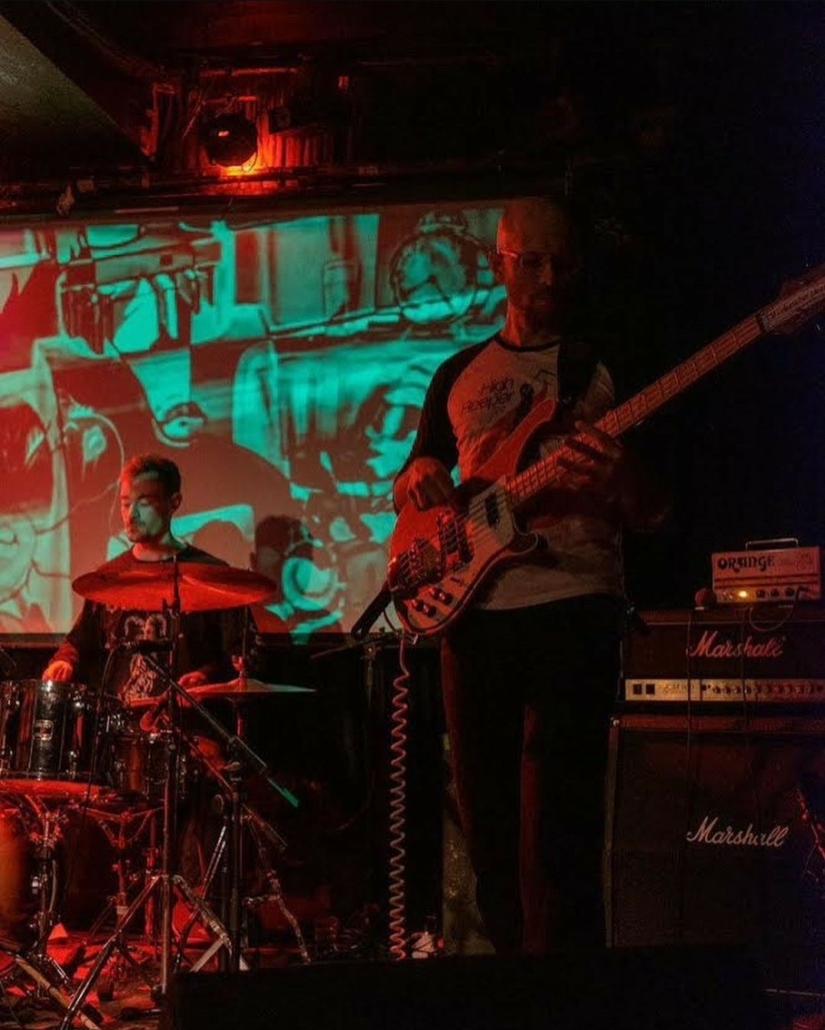
What’s on the horizon for Troy The Band?
A lot!
Bonebag Records are putting out our debut full-length album Cataclysm on February 2nd. We are kicking off a tour supporting it on the 9th of February.
We’re also working hard on getting our second album ready and will head back into the studio this summer to record that, among a few one-off dates that we have in the calendar this year.
So there is lot’s to look forward to.

Gear Currently Used
